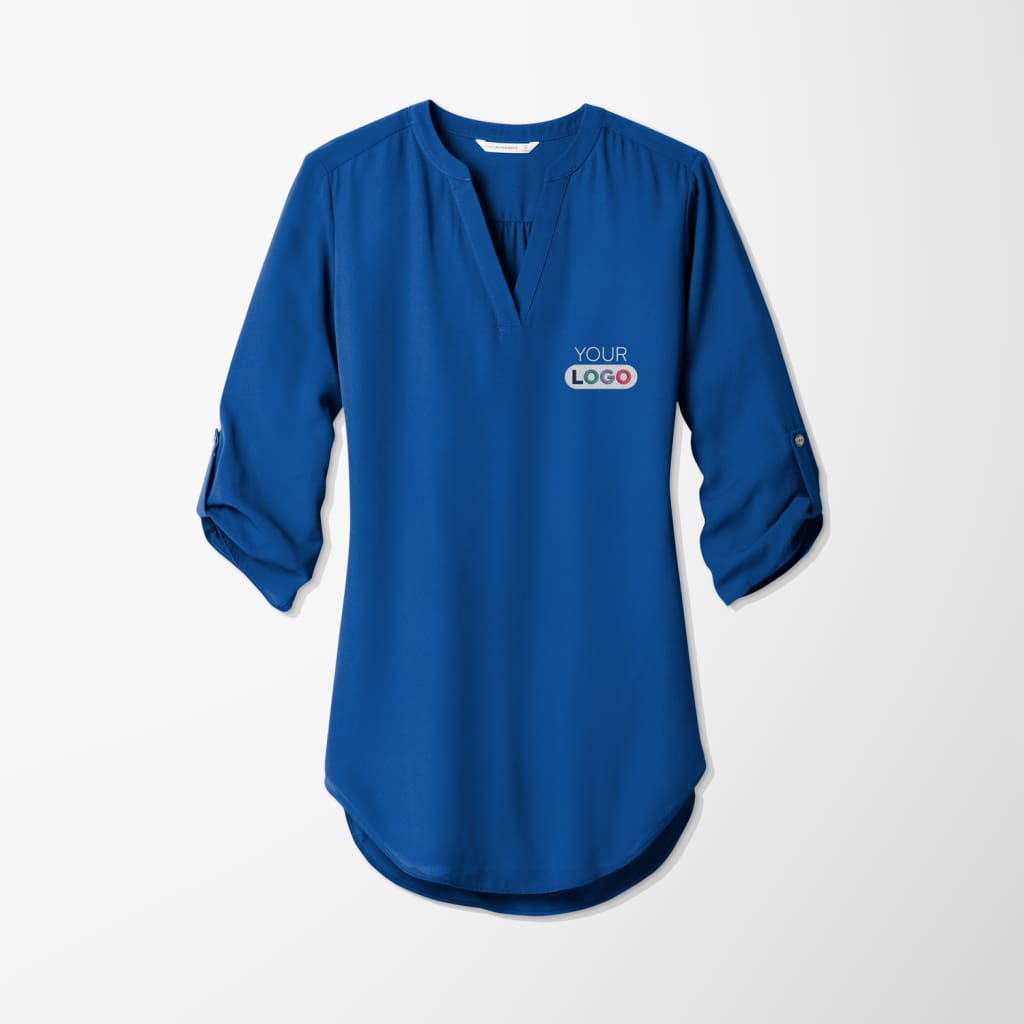How Fabric Weight Impacts Comfort in Branded Clothing
How Fabric Weight Impacts Comfort in Branded Clothing
Blog Article
Comprehending Clothes: The Value of Fabric Choices in Your Wardrobe
The selection of textile in garments plays a crucial role in both aesthetics and capability. Different materials use varying levels of convenience, breathability, and longevity, directly influencing the user's experience. Recognizing these nuances can improve one's closet significantly. Lots of forget how these selections can impact not just personal design, yet also sustainability. What material decisions could redefine your closet and align it with both style and responsibility?
The Duty of Fabric in Fashion and Functionality

Typical Fabric Types and Their Features
When picking garments, comprehending the characteristics of typical fabric types is important for making educated options. Cotton, a widely-used all-natural fiber, is recognized for its soft qualities, breathability, and versatility, making it appropriate for casual wear and everyday garments. Bed linen, one more all-natural option, boasts exceptional moisture-wicking buildings and a distinct texture, perfect for cozy climates.Wool, typically favored for its heat and longevity, varies in fineness; merino wool is soft against the skin, while coarser types are made use of for outerwear. Synthetic fabrics like polyester and nylon use sturdiness and resistance to creases, making them prominent for activewear and travel garments. Blends, which incorporate artificial and all-natural fibers, can improve capability while maintaining comfort. By recognizing these material qualities, individuals can pick garments that straightens with their lifestyle and visual preferences.
Breathability and Convenience: Choosing the Right Fabrics for Different Environments
Choosing the best textiles for numerous climates can greatly boost convenience and general wearability. Breathable materials are vital in hot climates, as they allow air blood circulation and moisture evaporation. Fabrics such as cotton, bed linen, and moisture-wicking synthetics successfully attract sweat far from the body, keeping the user cool and dry. Conversely, in colder environments, thicker fabrics like wool or fleece give insulation while retaining breathability, making certain heat without overheating.Additionally, the selection of textile weight plays a crucial duty; light-weight textiles are more suitable for summertime, whereas heavier options are suited for winter months wear. Understanding the unique properties of each textile enables individuals to clothe appropriately for differing weather condition conditions. Eventually, picking breathable and comfy materials tailored to specific climates can greatly boost day-to-day convenience and improve the general experience of wearing clothes.
Sturdiness and Treatment: How Textile Impacts Durability of Your Wardrobe
Selecting the appropriate materials can substantially affect the toughness and care requirements of a wardrobe. Fabrics such as cotton and polyester are recognized for their strength and simplicity of maintenance, making them optimal for day-to-day wear. In comparison, delicate materials like silk and shoelace require even more careful handling and specialized cleaning methods, which can boost the time and effort needed for care. Branded Clothing.Durability is also affected by the material's weave and coating; firmly woven fabrics have a tendency to withstand damage far better than loosely woven options. In addition, synthetic blends commonly supply enhanced durability, integrating the ideal top qualities of several fibers.Understanding the care guidelines for each and every material is important, as improper washing or drying can cause premature wear. Ultimately, picking long lasting materials can bring about a longer-lasting closet, minimizing the frequency of substitutes and contributing to a much more sustainable fashion choice
The Impact of Material on Fit and Shape

Lasting Fabric Options: Making Eco-Friendly Choices
The impact of textile prolongs beyond fit and silhouette to incorporate environmental elements, prompting an expanding rate of interest in lasting textile options. Environmentally friendly materials, such as organic cotton, hemp, and Tencel, are getting traction among consumers who focus on sustainability in their wardrobes. These materials are often created with fewer chemicals and water, minimizing their environmental footprint.Additionally, recycled textiles, made from post-consumer waste, provide a cutting-edge solution to the textile market's pollution issue. Brands increasingly accept transparency in their sourcing approaches, permitting consumers to make educated choices about their purchases.Choosing lasting textiles not only supports moral practices but additionally motivates the garment industry to embrace even more responsible manufacturing methods. As understanding of environmental problems climbs, people are urged to assess the long-lasting influence of their fabric choices, fostering a movement in the direction of a much more sustainable and environmentally mindful Full Report approach to fashion.
Raising Design: Exactly How Textile Can Change an Attire
While lots of might concentrate on shade and cut when picking an attire, the option of material plays a crucial function in raising design and improving total appearance. Different materials communicate distinct state of minds and messages; for instance, silk shows high-end and refinement, while jeans uses a laid-back, unwinded vibe. The appearance and drape of a material can dramatically websites change the shape, with structured textiles offering a sleek look and softer ones developing a more fluid, loosened up aesthetic.Moreover, the weight of the fabric influences wearability throughout seasons. Lightweight fabrics like bed linen and cotton are suitable for summer season, while heavier products such as woollen and velvet offer heat and beauty in colder months. Understanding material buildings, such as breathability and stretch, likewise empowers individuals to make educated selections that boost convenience without jeopardizing style. Eventually, the right material can change an outfit from average to phenomenal, making it a crucial factor to consider in any kind of wardrobe.
Often Asked Inquiries
Exactly how Do I Recognize the Fabric Web Content of My Clothes?
To determine textile material, one can check out care labels, conduct burn tests for fiber recognition, or get in touch with material swatches. These techniques assist differentiate materials, making sure informed options for apparel treatment and upkeep in day-to-day wear.
Can Textile Selection Affect My State Of Mind or Self-confidence?
Material choice can greatly impact an individual's mood and confidence. Branded Clothing. Certain products might evoke feelings of comfort or elegance, while others can feel limiting or unflattering, inevitably influencing self-perception and emotional health throughout the day
What Fabrics Are Best for Delicate Skin?
For individuals with sensitive skin, all-natural fabrics like cotton, bed linen, and bamboo are commonly advised. These products are breathable, hypoallergenic, and much less most likely to trigger irritation, making them suitable choices for convenience and skin health and wellness.
Just how Do I Effectively Clean and Treatment for Different Fabrics?
To effectively care and wash for various textiles, one must think about each material's details requirements, including temperature level settings, cleaning agents, and drying methods, ensuring durability and keeping the textile's original high qualities for suitable use.
Exist Particular Fabrics for Athletic or Performance Use?
Sports or performance wear commonly utilizes materials such as spandex, nylon, and polyester. These products are designed for moisture-wicking, breathability, hop over to here and versatility, enhancing motion and convenience during physical tasks while giving toughness and assistance. Conversely, in cooler environments, thicker textiles like wool or fleece give insulation while maintaining breathability, ensuring warmth without overheating.Additionally, the option of fabric weight plays a vital duty; lightweight fabrics are better for summer season, whereas much heavier alternatives are suited for winter season wear. In contrast, delicate products like silk and shoelace require more cautious handling and specialized cleaning methods, which can raise the time and initiative required for care.Durability is also affected by the material's weave and finish; snugly woven textiles often tend to withstand wear and tear much better than freely woven options. In contrast, stiff fabrics can limit movement however offer a classic, refined look.Moreover, the thickness and structure of the textile can affect the visual assumption of body shape. The impact of textile prolongs beyond fit and silhouette to encompass ecological aspects, motivating a growing rate of interest in lasting fabric options. The structure and drape of a material can drastically change the silhouette, with structured textiles supplying a refined look and softer ones creating an extra fluid, loosened up aesthetic.Moreover, the weight of the fabric affects wearability across periods.
Report this page